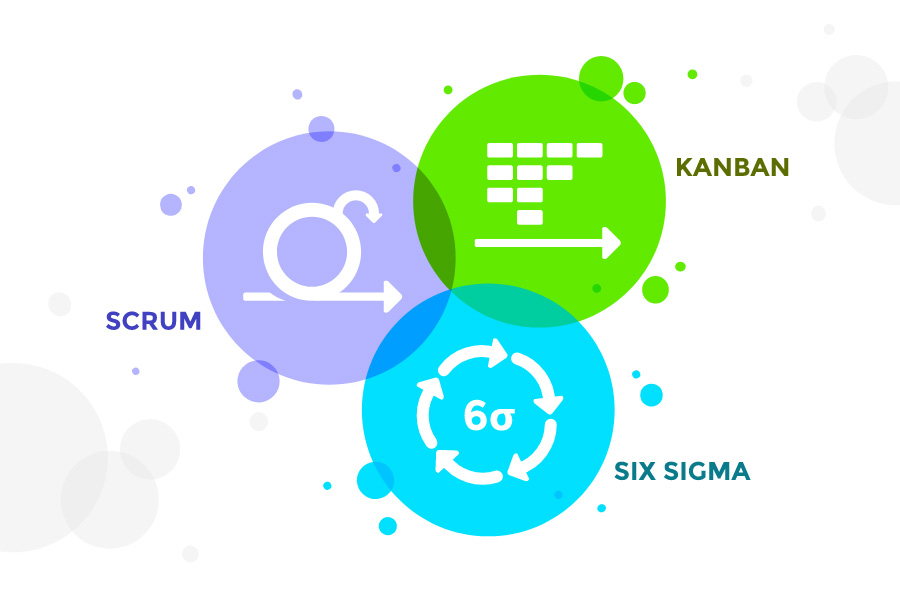
Project management is a critical aspect for any organization. Successful businesses depend on their projects to drive success. Project management has many benefits such as tracking work, keeping budgets on track, and delivering results that positively impact a business's revenue streams. Companies can achieve their strategic goals through good project management. Project management software helps enhance project management effectiveness. A few of the significant benefits that project management software can bring include saving time and money, improving internal communications, making better business decisions, and much more.
Using a project management tool enables your entire organization to see the relevant data they need in order to continue working efficiently. Top management can get an interactive birds’ eye-view of highlights and risks with drill-down real-time reporting capabilities.
Read on: Project management dashboard.
The interesting question that often gets asked is, ‘do these project management software applications support the various types of project management methodologies?’
There are many project management methodologies. But why? The answer is that no two projects are exactly the same. Different teams work across various industries. What works best for one team in an industry may not work for another group in another sector. We had software teams that were using traditional project management methodologies but found that many were rigid and didn’t offer flexibility for their deliverables. The teams then switched their project management methodology to something which could provide better results.
Read on: Why do projects fail?
What is a project management methodology?
A project management methodology helps organize projects using principles and practices so that projects stay on track and produce desired successful outcomes.
There are many project management methodologies out there, but let’s take a closer look at three popular ones.
Kanban
Kanban originates from Agile project management principles. Do you know what Kanban means? Kanban was actually derived from the manufacturing industry and is a framework where tasks are represented visually. The tasks progress through columns using the Kanban board.
There’s a pre-defined work backlog and you can choose tasks from it based on the team’s capacity. Kanban boards consist of columns that represent stages of the work process.
The advantage Kanban offers is that it shows you the status of where each task or piece of work stands at a point in time. You can use Kanban boards to manage your software projects, recruitment process, or even marketing campaigns.
If any of the columns become clustered, then you know that area has some bottlenecks that need addressing as soon as possible. You can also implement limits that restrict the number of tasks in action at a point. For example, you can limit one of the columns so that there’s no more than ten tasks. Setting a limit prevents overloading and allows your team to focus on the task at hand. The Kanban process improves productivity as more focus is placed on individual tasks.
A Kanban style project management methodology is suited for those looking for a visual representation of a project's progress, setting limits to tasks, and pulling in work when needed.
Scrum
Scrum comes from the line of Agile project management practices. An agile project is where work is added to a product backlog and the work gets delivered in fast and short iterations.
These short iterations are called sprints which can typically last between 1 to 2 weeks. Scrum involves a small team that’s made up of cross-functional team members that are led by a Scrum master. The Scrum master’s role should not be confused with the project manager. Their role is to act as a facilitator and help resolve issues in order to ensure that the sprint goals are met.
This style of project management is best suited to teams that are seeking continuous improvement.
Six Sigma
Six Sigma is a methodology for process improvement where the focus is on ensuring quality with consistency in output.
Six Sigma has different levels, including Lean Six Sigma and Agile Sigma. However, Six Sigma is focused on goals to improve and optimize existing processes. Where possible, it tries to create new processes too.
The Six Sigma DMAIC process represents phases in the project. They stand for Define, Measure, Analyze, Improve, and Control.
For creating new processes, you can use the Six Sigma DMADV process: Define, Measure, Analyze, Design, and Verify.
The Six Sigma set of principles and techniques is a philosophy that can be applied to other project management methodologies, like Agile or Lean.
This project management methodology is best suited if you’re looking to use the set of principles across all projects in the organization.
Choose wisely
Selecting the best project management methodology can enhance the project management capabilities of teams. Along with it, be sure to explore tools that can support various project management methodologies.
Be sure to try out Vault. It’s a feature-rich and versatile project management tool that supports various methodologies such as Kanban, Scrum, Six Sigma, and more. Set up projects quickly, move tasks across the process with a simple drag and drop features, view organization-wide projects in real-time, access it on the go, and it's friendly for remote working teams too. These are just a few benefits of Vault.
Discover more exciting project management features that Vault can offer by contacting us to schedule a demo.
.png)